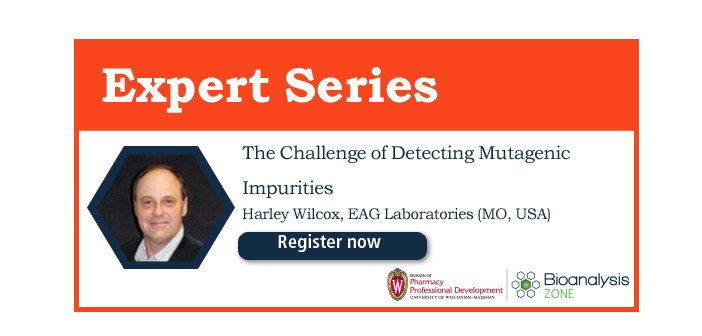Expert Series: The Challenge of Detecting Mutagenic Impurities

Available to view on demand!
Speaker: Harley E. Wilcox
Harley is a Senior Scientific Advisor for EAG laboratories in Columbia MO and assists new client projects, proposals generation, and acts as an interface between business development and EAG operational teams. He primarily supports small molecule analytical projects including MD/MV and stability.Oncology Drug Development—Harley’s pharmaceutical career has spanned 30 years beginning with Marion Laboratories and manufacture of API. He moved from manufacturing to NCE synthesis to support of chemical development and oncology drug discovery programs, eventually to Analytical development support of oncology drugs.
As part of a new CMC regulatory submissions group he supported global CMC team submissions. As a director of manufacturing with oncology start-up Taxolog Inc. in New Jersey, he supported three clinical NCE’s, thousands of research compounds and developed on internal analytical group. The group developed expertise in impurity ID, method development and in-vitro metabolism studies. He developed relationships with many CMO’s and CRO’s for DS and DP clinical trial manufacturing, supply chain management, as well as pharmacokinetics support.Harley received his BS in chemistry from UMKC and his MBA in healthcare management (FIT-2011). He continues with his pursuit of knowledge in science and business.
In this webinar, Harley Wilcox discusses the current guidelines including ICH M7 providing an overview of assessing and evaluating limits of impurities in pharmaceuticals that are suspected or classified as mutagenic impurities. These impurities may be associated with known added agents, environment, or degradation products from pharmaceutical compositions. Proposed limits for genotoxic impurities reside well below common impurities discussed in ICH Q3A guidance and require analytical techniques capable of detecting and measuring ppm to ppb levels. This webinar provides an overview of analytical technologies for detecting mutagenic impurities.
5 takeaways from this webinar:
1: Recognize the three primary sources of mutagenic impurities
2: Review ICH M7 VS ICH Q3
3: Plan to handle reactive mutagenic impurities in method development
4.Evaluate the role of detector sensitivities
5.Recognize assessments in relation to phase of development
For more webinars from our expert series click here
